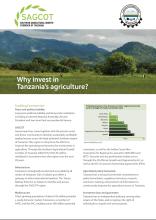Land Library
Bienvenue dans la bibliothèque du Land Portal. Explorez notre vaste collection de ressources en libre accès (plus de 74 000), comprenant des rapports, des articles scientifiques, des articles de recherche, des publications évaluées par des pairs, des documents juridiques, des vidéos et bien plus encore.
/ library resources
Showing items 1 through 9 of 30.Land, as a factor of production, has a vital role within the agricultural sector compared with other sectors.
Despite the popularity of agricultural land markets as a research topic, a current literature review on price drivers on agricultural land rental markets is missing, which is crucial in order to gain an overview of the status quo.
While agrarian change has been a recurrent theme in Ghana’s endeavor for economic development, questions on how land resources should be managed to ensure prompt attainment of economic growth remain unanswered.
Food is wasted throughout the entire food supply chain—from agricultural production to the household level. This has negative impacts on natural resources and the environment. At the same time, food waste is undermining the global target of food security.
Government has come together with the private sector and donor community to develop sustainable, profitable agribusinesses across the high-potential Southern region of Tanzania. This region is a key focus for efforts to improve the operating environment for investments in agriculture.
The Southern Agricultural Growth Corridor of Tanzania (“SAGCOT”) has been established as a public private partnership with the objective to enhance Tanzania’s food security and accelerate agricultural transformation.
Tanzania has a long history of sugar cane production and it has now a prioritized national policy to attract foreign investments into modern and industrial scale sugar cane production. Between 2001 and 2010, the production of sugar in Tanzania increased from 130,000 Mt pa to 280,000 Mt pa.
The founding document of SAGCOT, the Investment Blueprint, was developed by the founding partners encompassing government, donor partners, farmers, and the private sector. The SAGCOT Investment Blueprint details the objectives of SAGCOT and how these will be achieved.
This case study is part of a Harvard Kennedy School CSR Initiative workstream on systemic approaches to creating business opportunity and development impact at scale.








